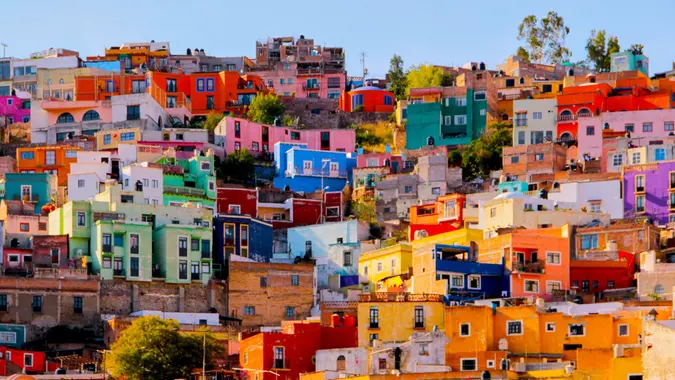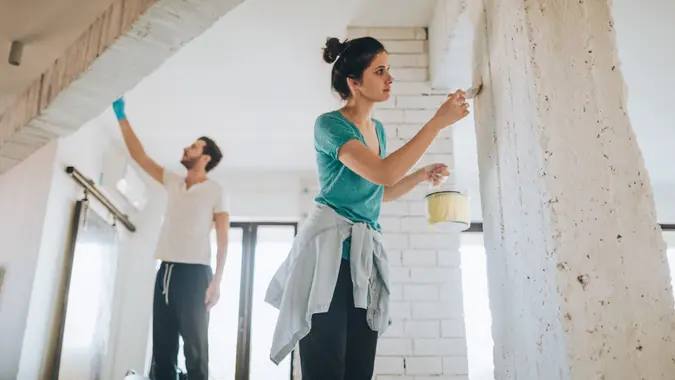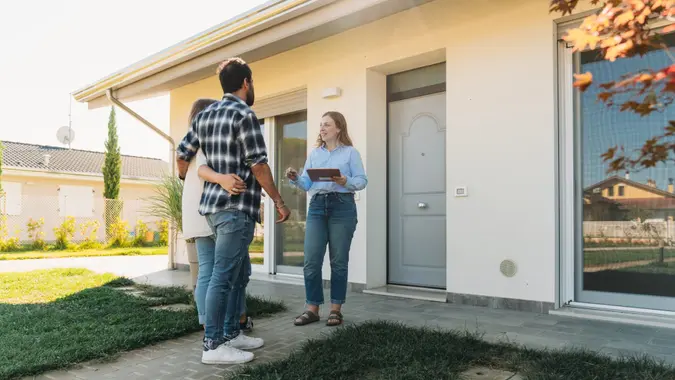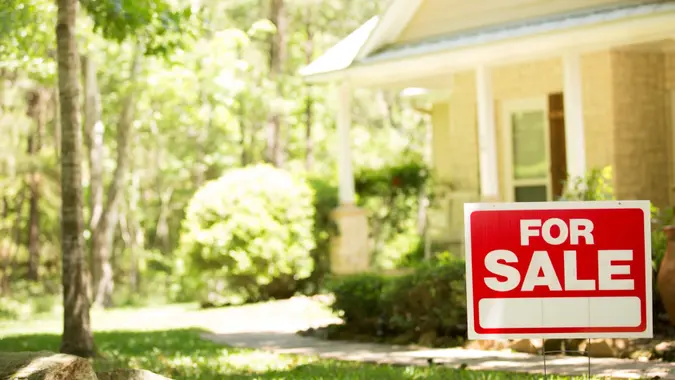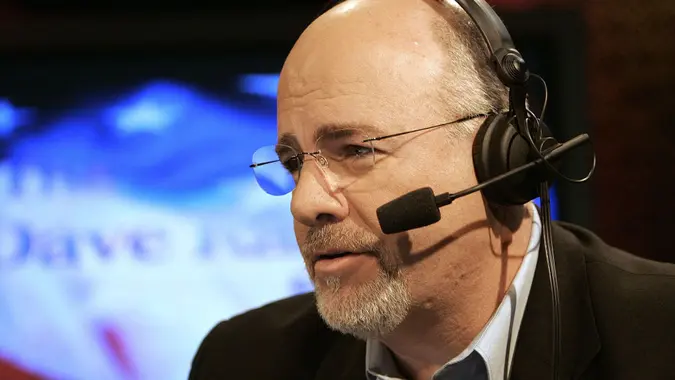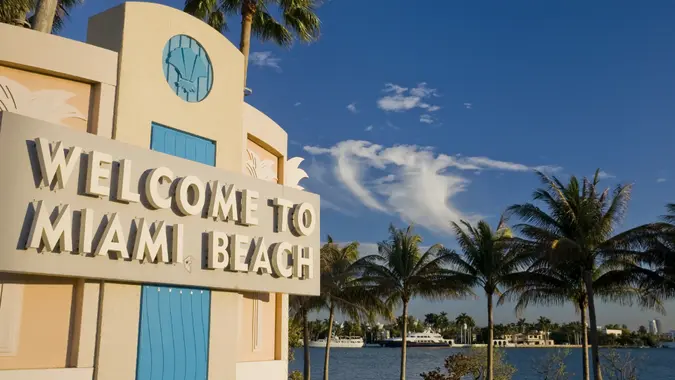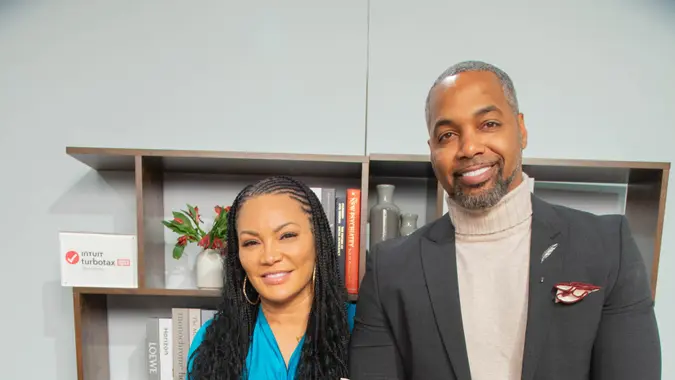Understanding the BRRRR Method: A Step-by-Step Guide for Real Estate Investors

Commitment to Our Readers
GOBankingRates' editorial team is committed to bringing you unbiased reviews and information. We use data-driven methodologies to evaluate financial products and services - our reviews and ratings are not influenced by advertisers. You can read more about our editorial guidelines and our products and services review methodology.

20 Years
Helping You Live Richer

Reviewed
by Experts

Trusted by
Millions of Readers
If you’re looking for a way to build wealth through real estate without running out of cash, the BRRRR method might be the strategy you’ve been searching for. This repeatable investing approach allows you to recycle your capital, grow your portfolio and generate passive income over time — all while minimizing your upfront cash requirements.
But what exactly does BRRRR mean, and how can you use it successfully?
In this guide, we’ll break down the BRRRR strategy step-by-step, explain how each phase works and share expert tips to help you get started with confidence.
What Is the BRRRR Method?
The BRRRR method stands for:
Buy, Rehab, Rent, Refinance, Repeat.
It’s a popular real estate investing strategy used to build long-term wealth by purchasing undervalued properties, fixing them up, renting them out, refinancing to recover your investment and repeating the process with a new property.
Originally popularized by investors through BiggerPockets, the BRRRR strategy has gained traction as a more efficient way to scale a rental portfolio compared to traditional buy-and-hold methods.
Step 1: Buy
The first step in the BRRRR method is finding and purchasing a property with value-add potential.
What to Look For:
- Distressed or undervalued homes
- Foreclosures or short sales
- Motivated sellers or off-market deals
The goal is to buy below market value so you can add equity through renovations later.
Key Tips:
- Focus on location — even a great rehab won’t fix a bad neighborhood.
- Run the numbers carefully using a tool like the 70% rule. Aim to pay no more than 70% of the ARV (after-repair value) minus repair costs.
- Don’t forget to estimate repair costs upfront and factor in a buffer for surprises.
Step 2: Rehab
Rehab is where you add value by renovating the property. The better the rehab, the more equity you build and the more rent you can command.
Plan and Budget Wisely:
- Prioritize updates that boost property value: kitchens, bathrooms, curb appeal
- Stay within budget and avoid over-improving for the neighborhood
- Use a detailed scope of work to manage contractors
DIY vs. Hiring Contractors:
- For small cosmetic fixes, DIY can save money — but know your limits
- For structural or system upgrades like HVAC and plumbing, hire licensed pros to ensure compliance
A well-managed rehab can increase a property’s value by 20% to 30%, depending on the market and scope of improvements.
Step 3: Rent
Once your property is in rent-ready condition, it’s time to bring in tenants and start generating income.
Prep the Property:
- Install appliances, smoke detectors and do a deep clean
- Take professional photos for listings
Set a Competitive Rent:
- Research local rental comps
- Use tools like GOBankingRate’s housing price calculator
Choose Great Tenants:
- Screen applicants with credit checks, background checks and references
- Use a solid lease agreement and clear communication
A good tenant can help you earn consistent rental income — an essential piece of the BRRRR strategy.
Step 4: Refinance
This is where the BRRRR method truly shines. After renting the property, you’ll refinance it — ideally with a cash-out refinance — to pull out most or all of your original investment.
Here’s How It Works:
- Get the property appraised based on its current post-renovation value
- If the numbers work, the bank will refinance the property at the new value and give you cash back
- You use this cash to fund your next BRRRR deal
What You Need to Know:
- Lenders usually want 6 to 12 months of ownership or rental history
- A higher credit score and a low debt-to-income ratio help with approval
- Not all banks offer cash-out refis on investment properties, so shop around
If done right, refinancing can return 80% to 100% of your capital, letting you reinvest without adding new funds.
Step 5: Repeat
Now that you’ve pulled out your cash, you’re ready to repeat the process.
How to Scale Your Portfolio:
- Use the same capital to buy another property
- Look for ways to streamline your communications with contractors, lenders and property managers
- Consider expanding into other neighborhoods or property types, e.g., duplexes or small multifamily
The BRRRR strategy is powerful because it’s repeatable, turning one down payment into multiple long-term income-producing assets.
Pros and Cons of the BRRRR Strategy
Benefits
- Recycle your capital: One-time investment fuels multiple properties
- Build equity and cash flow faster than traditional methods
- Gain experience across all aspects of real estate investing
Challenges
- Upfront costs for repairs, closing and carrying the property
- Refinancing hurdles like strict lender requirements or lower appraisals
- Active management: This isn’t a hands-off strategy, especially early on
Tips for Success With the BRRRR Method
To make the most of the BRRRR strategy, keep these best practices in mind:
- Do your market research: Know the ARV, rental demand, and local regulations
- Build a reliable team: Include a real estate agent, lender, contractor and property manager
- Stay financially flexible: Have reserves for repairs and vacancies
- Track every dollar: BRRRR relies on precise budgeting and forecasting
Final Take to GO: Is the BRRRR Method Right for You?
The BRRRR method can be a powerful tool for real estate investors who want to build long-term wealth and passive income. It’s ideal for those who are hands-on, numbers-savvy and willing to put in the work upfront.
By understanding the BRRRR meaning and following the strategy step-by-step, you can scale your investment portfolio while using the same pool of capital again and again.
Ready to take the next step? Check out GOBankingRate’s breakdown of 10 cities where home values are rising and why real estate is a good investment.
FAQ
Here are the answers to some of the most frequently asked questions about real estate investing and how it works:- What is the BRRRR method?
- The BRRRR method is a real estate investing strategy that stands for Buy, Rehab, Rent, Refinance, Repeat. It allows investors to grow a rental portfolio using the same capital multiple times.
- How does refinancing work in the BRRRR strategy?
- After rehabbing and renting out the property, you refinance based on its new value. Ideally, this returns your initial investment so you can buy your next property.
- What are the risks of the BRRRR method?
- Risks include cost overruns during rehab, low appraisals, trouble refinancing or poor tenant performance. These can all reduce returns or delay your ability to repeat the process.
- Can beginners use the BRRRR method successfully?
- Yes -- but it helps to start small, learn from others and work with professionals who can guide you through your first deal.
Data is accurate as of July 30, 2025, and is subject to change.
Editorial Note: This content is not provided by any entity covered in this article. Any opinions, analyses, reviews, ratings or recommendations expressed in this article are those of the author alone and have not been reviewed, approved or otherwise endorsed by any entity named in this article.
Our in-house research team and on-site financial experts work together to create content that’s accurate, impartial, and up to date. We fact-check every single statistic, quote and fact using trusted primary resources to make sure the information we provide is correct. You can learn more about GOBankingRates’ processes and standards in our editorial policy.
- Rocket Mortgage "What is the 70% rule in house flipping and does it show how much to pay for a distressed property?"
- HomeAdvisor "Additions & Remodeling Cost Guides"
- The Mortgage Reports "How to Cash-Out Refinance Investment Property in 2025"
 Written by
Written by  Edited by
Edited by 







